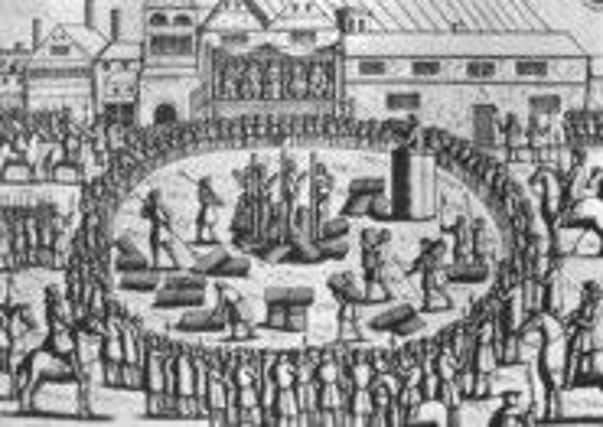Worksop: Forgotten tale of the local man burnt at the stake for his beliefs against the Catholic Church


However, some people wanted reform of the Church to move rather faster than Henry did, one being Anne Askew.
Anne read the new Bible in English and developed some opinions that were radical for the time including whether the ‘Mass’ was really or symbolically the body of Christ.
Advertisement
Hide AdAdvertisement
Hide AdDespite her brother Edward being a bodyguard to the King, she was arrested, tortured illegally, and burnt at the stake on a chair – she could not stand.
Anne was tortured as the authorities wanted to know who her associates were, but she didn’t tell.
However, three people were burnt at the stake along with her in 1546 and one of these – certainly known to her - was John Lassells, of Gateford, near Worksop (Lassells’ family also held land at Sturton-le-Steeple).
The story of how he paid for his life with his beliefs is –amazingly – little known in Worksop today.
Advertisement
Hide AdAdvertisement
Hide AdAs a young man Lassells got a job with Thomas Cromwell, who perhaps then helped him to get a new job in the Royal household in 1539.
His sister Mary lived in another noble household until she married, also living in London.
Lassells wanted more religious reform but he knew he had enemies and advised his friends to be cautious – especially when Henry VIII was courting Catherine Howard, who came from a religiously conservative family.
After the royal marriage, Lassells’ sister Mary was asked to join the new queen’s ‘court’ – and refused.
Advertisement
Hide AdAdvertisement
Hide AdShe told her brother that, when they had shared a house in their younger years, Catherine Howard had had indecent relationships with two men.
Lassells told the archbishop Thomas Cranmer, who passed the message to the King in writing as he was too scared to tell him directly.
When coupled to stories about two more recent lovers, the reports plunged Henry into fury and led to several executions.
So, two local people played a key role in the execution of Catherine Howard.
But John Lassells was a hated man after this.
Advertisement
Hide AdAdvertisement
Hide AdHe made no secret of his views on the Mass and so was also arrested.
He, Askew and the others spent their last hours in the Tower where Lassells was worried Askew had repented.
They were able to write messages to each other, but Askew replied: ‘O friend, most dearly beloved in God, I marvel not a little what should move you to judge in me so slender a faith as to fear death, which is the end of all misery. In the Lord, I desire you not to believe in me such wickedness.’
Lassells was burnt at the stake with Anne Askew in London in 1546.
Advertisement
Hide AdAdvertisement
Hide AdHe went to his death ‘merry and cheerful in the Lord.’ Pouches of gunpowder were tied to their bodies so that they would be killed quickly by explosion rather than die slowly in the flames.
It was a small mercy.
Lassells has been forgotten by his home district and there is no memorial.
A recent history book covered the Lassells family in some detail – but missed him out.
There is a memorial to a later member of the family at Worksop Priory, but little else.
Advertisement
Hide AdAdvertisement
Hide AdHe is an example of how we need to tell our local story more successfully, for Lassells is an opening chapter in the story that led to the Mayflower and New England but also the churches in England that broke away from the Church of England.
For more information on the new Pilgrims & Prophets social enterprise group of churches, visit www.prophetsandpilgrims.co.uk